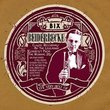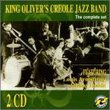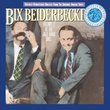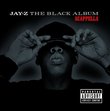| All Artists: Bix Beiderbecke Title: Singin the Blues 1 Members Wishing: 1 Total Copies: 1 Label: Sbme Special Mkts. Release Date: 2/1/2008 Genres: Jazz, Pop Styles: New Orleans Jazz, Traditional Jazz & Ragtime Number of Discs: 1 SwapaCD Credits: 1 UPC: 886972380827 |
Search - Bix Beiderbecke :: Singin the Blues 1
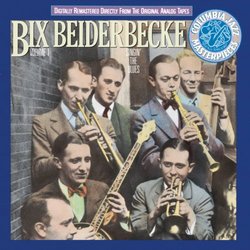 | Bix Beiderbecke Singin the Blues 1 Genres: Jazz, Pop
In jazz's childhood, Bix Beiderbecke was the only cornet player to rival Satchmo in terms of influence on other musicians and on the development of the genre. Armstrong's syncopated delivery, his blues shadings, his unique... more » ![header=[] body=[This CD is available to be requested as disc only.]](/images/attributes/disc.png?v=15401716) ![header=[] body=[This CD is unavailable to be requested with the disc and back insert at this time.]](/images/attributes/greyed_disc_back.png?v=15401716) ![header=[] body=[This CD is unavailable to be requested with the disc and front insert at this time.]](/images/attributes/greyed_disc_front.png?v=15401716) ![header=[] body=[This CD is unavailable to be requested with the disc, front and back inserts at this time.]](/images/attributes/greyed_disc_front_back.png?v=15401716) |
Larger Image |
CD DetailsSynopsis
Amazon.com In jazz's childhood, Bix Beiderbecke was the only cornet player to rival Satchmo in terms of influence on other musicians and on the development of the genre. Armstrong's syncopated delivery, his blues shadings, his unique phrasing--in short, his swing--became, rightly so, the benchmark, the standard by which jazz improvisation was not only judged, but actually defined. In a way, Bix represented both a practical and symbolic alternative to Armstrong. Though he was completely self-taught and couldn't read music, Bix's tone was incredibly pure, full, and lush, and his style was cooler, more restrained (but not reserved), and more plaintive than Louis's hot, ebullient playing--even though his actual tone remained bright and his note choices forceful. All of these 20 cuts come from 1927, and many of them rank among the finest performances of that classic era nudged between Dixieland and swing. A key component of these successes is Frankie Trumbauer, a remarkably fluent and lyrical C-melody sax player who was Beiderbecke's close friend and musical kindred spirit. The septet cuts from February and May are uniformly excellent, but "Singin' the Blues" (featuring Eddie Lang's prominent single-string guitar support), "Riverboat Shuffle," "I'm Comin' Virginia," and "Way Down Yonder in New Orleans" are astonishing landmarks in jazz history. Also worth noting are two trio cuts featuring Beiderbecke on piano supporting Trumbauer and Lang, and "In a Mist (Bixology)," a Bix piano solo full of bold, unorthodox melodies, harmonies, and rhythms. --Marc Greilsamer Similar CDs
Similarly Requested CDs
|
CD ReviewsSound could be better Thomoz | Atlanta GA | 10/12/2006 (2 out of 5 stars) "One of the other reviews commented how this disc had no surface noise? Well, they're right. The noise reduction (sounds like an older analog process) removed enough of the upper frequencies that the label chose to add echo after the fact to cover up their handiwork. So, "Blue River" is a brilliant performance . . . but it appears here in mediocre sound. For my money, the best sounding set out there NOT on Mosaic is the 2-cd 'Jazz Tribune Vol 48' on RCA (a US release). There is a WORSE sounding Beiderbecke cd out there, with Orrin Keepnews' name on it yet. BUT . . . that's another story." Epitomizes Easy Listening Nawbdy | Wharton, NJ USA | 02/02/2005 (5 out of 5 stars) "I've had this CD for a couple years now. I never tire of it. No matter what the circumstances of my life, I can't help but smile when I play this CD. If I'm feeling down Bix lifts me up. If I feeling good Bix helps me celebrate. I can think of no better recommendation." Six-star music, docked for outdated restoration Thomas Bumbera | Maplewood, NJ USA | 05/14/2008 (4 out of 5 stars) "In addition to being among the most influential and beautiful jazz sides ever recorded, the original Okeh 78s were exceptionally well-recorded for their day, as any collector lucky enough to own one will tell you. Digital remastering was in its early days when Columbia issued this and its companion Bix disc, and it shows; the sound is flat, with the brilliance of the highs all but gone. It's shameful that Sony/BMG, which now owns nearly EVERYTHING Bix recorded, including the Columbia and Victor Whiteman sides, has not done justice to Bix by releasing the beautiful boxed set that collectors worldwide would welcome. In the meantime, the best restorations thus far are the "Bix Restored" sets, and that's where you should begin if you have interest in Bix or the best of late 20s jazz in general."
|

 Track Listings (20) - Disc #1
Track Listings (20) - Disc #1